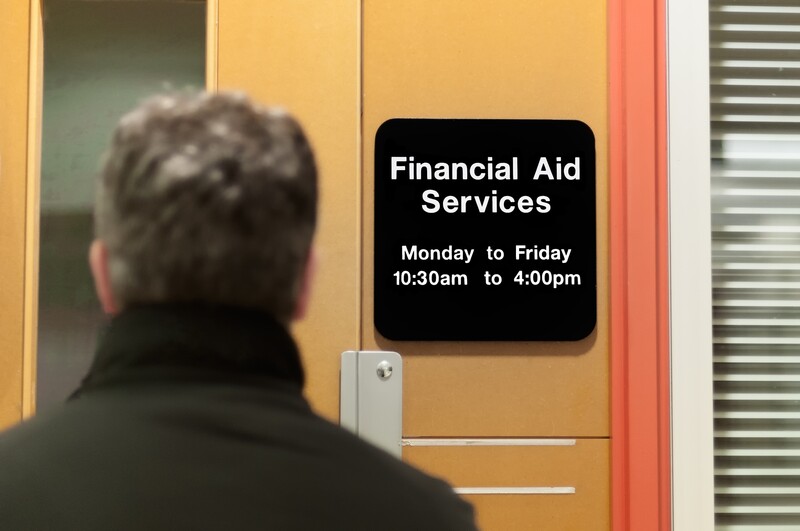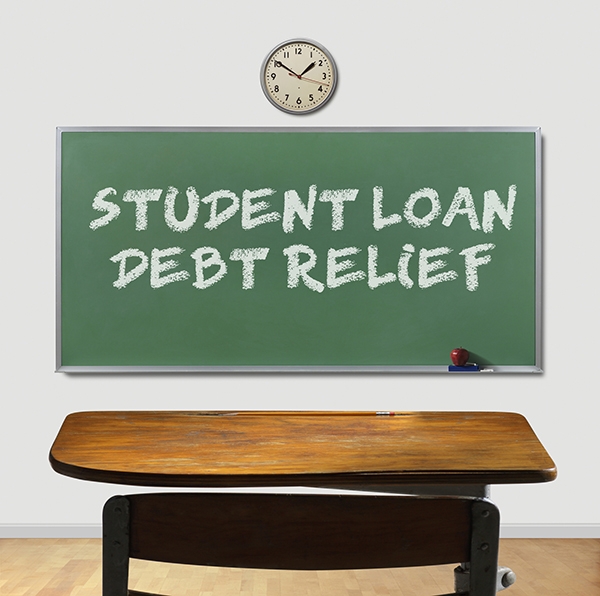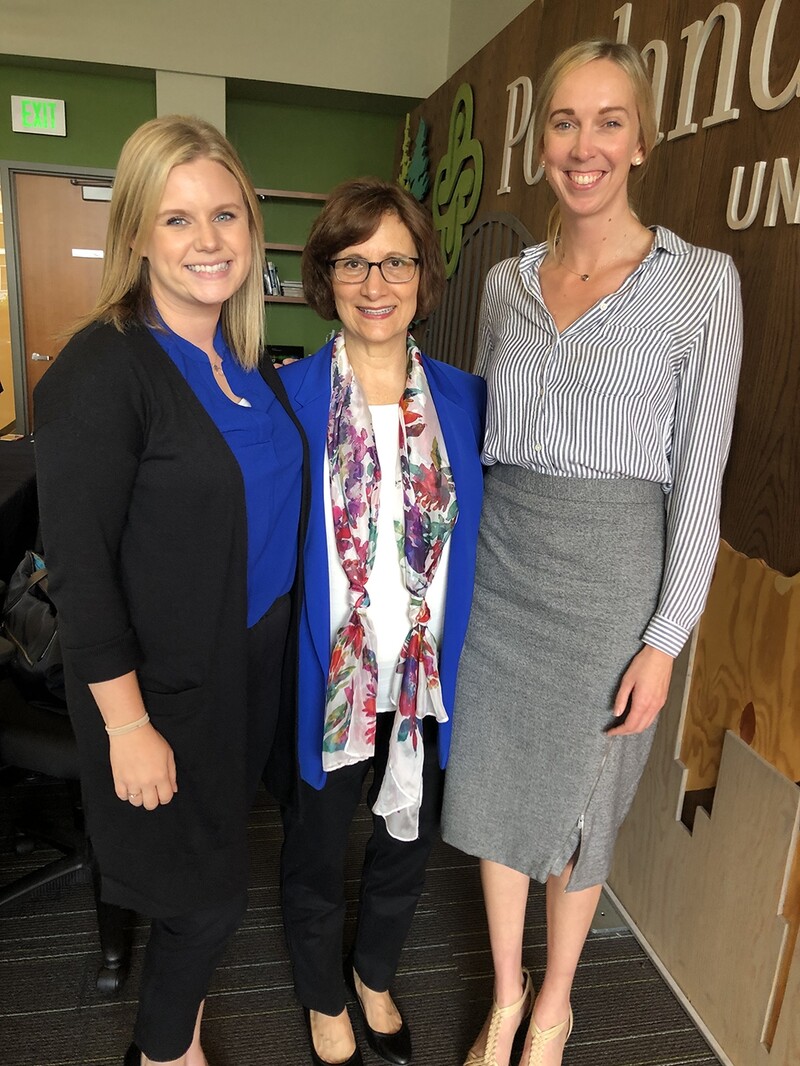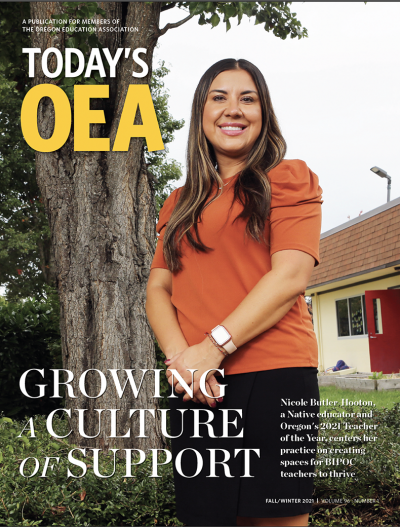When Congress passed the College Cost Reduction and Access Act in 2007, creating the Public Service Loan Forgiveness (PSLF) program, public-sector employees - including educators - rejoiced. This program would relieve them of their student loan debt if they made monthly payments for 10 years while working in a qualifying public service job. According to the Learning Policy Institute, the average student loan debt for educators in the United States who obtain a Master’s degree is $50,000, yet teachers’ salaries are much lower than those of private sector workers with the same level of education and experience. For the thousands of Oregon teachers who had taken out student loans in order to obtain a Master’s degree, a requirement to teach in Oregon’s public schools, the program was seen as a major incentive; a reward for their decision to serve their communities.
Flash forward to 2017, when the first group of debtors became eligible to apply for student loan forgiveness. Over 99 percent of applications were denied by the Department of Education, to the shock and dismay of those who believed they qualified for the program. Reports of misinformation, confusing application processes, and clerical errors began to roll in. The New York Times published a vast series of articles between 2017 and 2019, detailing the massive failure of the PSLF program for those who had counted on it. It appeared that in the ten years prior to the first wave of eligible applicants, insufficient systems were created to ensure that the program would be successfully implemented.
It is clear that the information that was being provided to those who sought loan forgiveness was insufficient. Though the Federal Student Aid website now provides a much more expansive definition of the exact qualification guidelines, that has not always been the case. There are a variety of things that can disqualify borrowers from program eligibility, but many spend years making loan payments before they realize that they are not eligible. Congress sought to fix the issue by introducing the Temporary Expanded Public Service Loan Forgiveness (TEPSLF) program in 2018, after repeated accusations of the program’s mishandling by the Department of Education. Even with the expansion of the program through TEPSLF, just one percent of applicants have been able to receive loan forgiveness.
In Denial
Joe Evers, a middle school Language Arts teacher from Portland, has been an educator for 19 years. He believed that he was on track to get student loan forgiveness through the Teacher Loan Forgiveness program, a similar but separate program which provides debt relief to teachers who work in low-income schools. “I've tried to get my student loan forgiveness taken care of 8 or 9 times. I've gone through the proper procedures I was told to go through,” says Evers. He certainly seems to qualify for the program, having taught at a Title I school for 16 years, yet no one can explain to him why he continues to get rejected. This process has been discouraging the veteran educator, who has already paid of nearly ⅔ of his loan balance. “Trying to get this help has just created a lot of headache as far as all the time I have to spend navigating things, and no one can ever answer my questions directly,” Evers shares.
Some of the most common reasons for denial are unconsolidated loans, not being on the right repayment plan type, and not having the correct type of loans.
If your loans are not consolidated, any payments you make before you consolidate them do not count toward the 120-payment requirement for the PSLF program. Many borrowers reported making years of payments before they were told they needed to consolidate in order to qualify, and that only then would they be able to make qualifying payments. Many assumed that their loans had been consolidated by their loan servicers, only to find out years later that none of their payments would count toward loan forgiveness.
Being on the right type of repayment plan is crucial. You have to be on an income-based repayment plan in order to qualify for the PSLF program. The idea is that public servants should be making the smallest payments that they can until they are eligible for forgiveness, yet many people don’t know this and continue to pay on a standard repayment plan or a graduated plan that gradually increases every year, unaware that none of those payments will be counted.
If you got a Parent Plus loan or a private loan, you are not eligible for loan forgiveness, but many federal loan programs will also disqualify you from PSLF eligibility. Only loans received through the William D. Ford Federal Direct Loan (Direct Loan) program can be forgiven. This means that Federal Family Education Loans and Federal Perkins Loans do not qualify - they may, however, be consolidated into a Direct Consolidation Loan and become eligible.

Frustrating Fate
Joanne Havran, an elementary school teacher in Portland, is in a unique situation with her student loan debt. She was able to pay off her student loans a year ago, after 20 years of making monthly payments. Her original loan was taken out before October of 1998, making it ineligible for the PSLF program and the Teacher Loan Forgiveness Program. She decided to go back to school last year to add an endorsement, so she took out her second student loan. “I got so burnt out from teaching Special Education that I needed to go back to school to change my endorsement in order to stay in my career,” says Havran.
After attending a student loan workshop, she was hopeful that she would qualify for forgiveness for the second loan under the Teacher Loan Forgiveness program (her loan was not large enough to meet the 120-payment requirement for PSLF) only to be told that anyone who took out a loan prior to October 1998 can never be eligible for that program. “I think that sounds a little strange, and I feel like maybe I should look into it some more but it's all so complicated,” she says, “Every time I talk to somebody, I try to explain my situation and they don't quite answer my questions and then I go back and ask more questions and in the end they say ‘no’. This is what has happened to me every single time.”
Through all this frustration, Havran still loves the career that she chose - the money spent on her education has been worth it. “I feel like this is what I’m meant to do and I can't even imagine myself doing anything else. Every few years I have thought about changing careers, but I don't think I could leave. I care about the students too much and I have a lot of passion for teaching,” she says.
But that doesn’t mean she would do it all the same if she had a chance to go back. “If I knew what I know now, maybe I might have made different choices, but I’ve kind of just accepted this as my fate at this point.”
“If I knew what I know now, maybe I might have made different choices, but I’ve kind of just accepted this as my fate at this point.”
— Joanne Havran
Uncertain Future
First-year elementary school teacher Elsbeth Rau worries that she won’t have a choice but to pay her student loans off entirely due to the earned mistrust of the PSLF program. “I'm going to have to make my own choices especially around income-based repayment. If I did that [my payments] would probably be 0. So then I wouldn't pay anything with this hopes that in 10 years. I am forgiven, but all of that money is accruing interest and if it's not forgiven...I’ll just have massive debt,” says Rau.
Rau was lucky not to have to take out student loans for her Bachelor’s degree, receiving scholarships to cover the cost of her tuition. When she graduated, she hadn’t yet decided to become a teacher, though she had always gravitated toward working with children and had come from a long line of educators and nurses. At the time, it seemed like she would be better off taking a job in the private sector, where she could earn more money.
“I fought the idea of becoming a teacher. I worked other jobs, but they never provided very much meaning in my life. I need to do something that feels like it has actual purpose outside of myself. I do feel that when I’m working with kids, and I'm good at it,” she shares.
When she went on to get her Master’s degree in Education, she considered the PSLF program, but the stories she heard on the news and read online about how few people have been approved for loan forgiveness left her with concerns. With no clear answers or best practices, she fears making the wrong decision and ending up worse off. “It still feels really overwhelming. You read the New York Times and see these people who are making payments for ten years and then it’s not forgiven. I feel like being super new to student debt, you just don't know who to turn to or who to trust. For now, I just deal with it and make crazy payments while I can. Is that the best way? I don't know.”

Costly Answers
Though it is possible to navigate the twists and turns of student loan forgiveness, it does not come without a great expenditure of time and effort. Aly Nestler, an elementary school teacher from Springfield, it has been a grueling task that she undertakes on a yearly basis.
When she graduated from her Master’s program eight years ago, she began what would become a long and arduous journey to getting the information she needed to ensure she would qualify for the PSLF program. In speaking with her classmates, it became clear that no one seemed to know what to do. So she started at the source.
“When I first graduated, I called the Department of Education very frequently. I talked to several different people, and I just got different information every single time. It was very difficult to find somebody who worked there that had accurate information,” says Nestler. Over time, she became somewhat of an expert on dealing with the program, and now has a system for making sure she is on track.
She submits yearly employment certifications to the Department of Education, which is not a requirement, but seems to be the most effective way to keep track of qualifying payments and catching any errors that may have been made - by the borrower, or the servicer. Each year that the borrower submits this certification, they receive a report that tells them how many qualifying payments they have made for that year, allowing them to verify this information against their records. However, all of the all the responsibility is on the borrower to make sure that their loan servicers and the Department of Education are doing their job.
Two years ago, Nestler accidentally filled out her start date with the district incorrectly on her yearly employment certification. The Department of Education certified her payments for that year anyway, and she didn’t find out until the following year that they had actually not been qualifying payments due to the inconsistent dates. “All of a sudden I had all of these missing payments from the year before, and when I talked to somebody, they told me I had written in the wrong date last year. I told them that my payments had been certified already, but I was told that they shouldn’t have been,” says Nestler. Then she was told that even though it was an error on behalf of the Department of Education, she would have to resubmit a corrected form, and her supervisor was required to call the department to verify that the information was correct.
Though she is determined to do everything she can to get her loans forgiven, she laments the amount of personal effort she has to put forth to make sure nothing goes wrong. “It is a very horrible, cumbersome process that I dread every single year because I just know that something is going to happen and I’ll have to spend hours of my life trying to sort out whatever hoop I need to jump through.”
It does not seem as though the Department of Education has done much to make the process easy, and their communication with borrowers is negligent at best. It is demoralizing to educators, who have very limited free time during normal business hours, thus they are less likely to be able to spend hours on the phone during the day. For Nestler, the effort is worth this time if she ever hopes to be released from her burdensome loans. “It’s supposed to be an incentive but in actuality, I've had to literally take personal time during the day so I could call and take care of this,” she says.

OEA members Kristy Fouts and Emily Ruggles attended a roundtable discussion with Congresswoman Suzanne Bonamici last Fall to share information about how the failed implementation of the program is costing educators personally and making it difficult to attract and retain talented, passionate young educators due to the student loan crisis and low teacher pay.
Photo credit: Jared Mason-Gere
Hope at Last?
In July 2019, Oregon House Representative Suzanne Bonamici authored a student loan debt bill, the SIMPLE Act, which received bipartisan support and will lower the number of student loan defaults by streamlining the process of applying for income-driven repayment plans, as well as providing debt relief to those with disabilities.
Bonamici held a roundtable discussion with a group of public workers who had faced difficulty navigating the PSLF program in September 2019. A recent survey conducted by Bonamici’s office about student loan debt had received many hundreds of responses, but she noted how many of them specifically called out concerns with PSLF.
At the roundtable, Bonamici heard from a variety of different public employees, including a fifth grade teacher from Beaverton, Kristin Fouts. She had applied for the program after graduating, and then spent the next ten years teaching and making monthly payments on her loans. At the ten-year mark, she submitted her application for loan forgiveness, and was unpleasantly surprised when her loans continued to haunt her.
She told the group how she spent months making phone calls, filling out more paperwork, and even getting the Consumer Financial Protection Bureau and Representative Bonamici’s office involved. “I made 120 months of qualifying payments into the Public Service Loan Forgiveness Program, but I had to fight tooth and nail to get the Department of Education to forgive my debt,” she said, “Two months of payments didn’t count because the amount of my automatic withdrawal was a few cents off through no fault of my own. The Department has the capability to fix these problems, but they don’t do it until you start complaining. I had to seek help from outside agencies, including Congresswoman Bonamici’s office and the ombudsman at the Department of Education, before I was finally successful.”
Representative Bonamici later shared her findings at an oversight hearing for the House Education and Labor Committee. “We need people who dedicate their careers to public service – including teachers, health care workers, and non-profit leaders -- for our communities to thrive,” said Bonamici, “People across Oregon and our country took jobs in public service and planned their lives around the Public Service Loan Forgiveness program, only to discover it was an empty promise. I am grateful for those who had the courage to share their experiences with this program. They and many other borrowers have upheld their end of the bargain, and I will do all I can to make sure the Department of Education does the same."
Though some small advances have been made toward simplifying the Public Service Loan Forgiveness program, it seems that there is still much ground left to cover in order to ensure that the promises made to public employees are kept.

